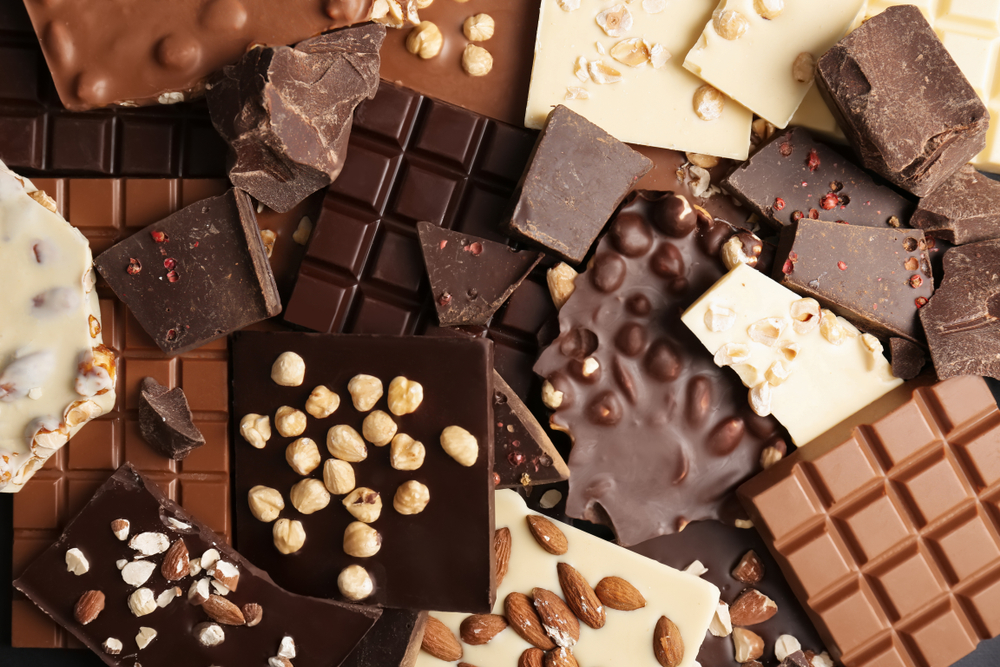Bitter or sweet, chocolate is a universally loved treat that evolves with the times to be both comforting and indulgent. As consumers move towards having healthier eating habits, sugar reduction has left confectionery category sales relatively flat over the past five years. The COVID-19 pandemic and changing buying habits provides short-term relief for the struggling category as consumers search for feel-good foods and permissible indulgences. While milk chocolate is king, dark chocolate is seeing a boost from consumers opting to include less sugar in their diets. A primary reason for snacking is to satisfy cravings, but for now, comfort is taking center stage.
Stay ahead of flavor trends and creative concepts—subscribe to In-sight!
Chocolate for All
In general, household consumption of chocolate confectionary is decreasing, yet despite the fall, 88% of households still consume chocolate. For households with kids under 18, 95% of polled adults bought chocolate in the past three months compared to 85% of households without children.
Women outpace men as chocolate consumers at 53% to 47%; however, men are driving their increase in consumption by 25%. In a poll by Lightspeed/Mintel of chocolate-purchasing adults, the top three reasons for eating more chocolate in the past year were increased overall snacking, eating on the go, and better variety. Convenience trumped portion control and healthier options.
The Great Dark vs. Milk Chocolate Debate
When consumers think of chocolate, they’re most likely reaching for “milk.” Milk chocolate is the #1 preference of consumers. In 2016, the average consumer ate a milk or dark chocolate item an average of 43.3 times total, 33.2 times it was milk chocolate and 10.1 times it was dark chocolate, while milk captured 76.7% of total eatings.
While milk chocolate is the most common purchasing type, dark chocolate purchases have increased by 8% since 2018 as consumers seek a healthier option to milk chocolate. From Google Search Trends, the top related search topic for users searching “dark chocolate” was “Ketogenic diet,” which has gone up +4,250% over the last five years. The healthier benefits of dark chocolate make it a desirable indulgent treat to satisfy cravings for those consumers on strict diets that don’t leave much room for sweets.
RELATED: What Vanilla Means to Symrise Flavor North America
For both milk and dark, consumption and search frequency increases in the months with holidays, especially peaking between the months of October and March where major sweets-buying holidays Halloween, Christmas, and Valentine’s Day fall. In a poll by Lightspeed/Mintel of over 1,700 chocolate-purchasing adults, 60% of males and females said they have bought general holiday-themed chocolate, 42% bought chocolate for Christmas, and 40% bought Valentine’s Day chocolate in 2019/2020.
Milk chocolate search terms outnumber dark in popularity, but since 2018, the margin of search has narrowed, according to Google Search Trends. This follows the trend of healthier eating and consumers adjusting their diets towards good-for-you food. Milk chocolate fluctuates more the seasonal spikes during fall and winter months while dark chocolate is steadier throughout the year. While dark chocolate is growing in popularity in general, consumer buying trends dipped lower at the end of 2019 than prior years, but then shifted back up in the first half of 2020 as COVID-19 purchases came into effect. Brand launches are slow to adapting dark into their products, however; of 2,377 recent chocolate launches, only 10.5% include dark, a number that should increase as consumers show more interest in better-for-you ingredients.
![]() Chocolate-covered Comfort
Chocolate-covered Comfort
A classic chocolate chip cookie remains a perfect treat that’s hard to top, but there’s always room for innovation in chocolate. The top ingredients traditionally paired with chocolate are chocolate chip and chocolate chip cookie dough, ice cream, vanilla, milk, whipped cream, and strawberry as well as peppermint during the holidays. These nostalgic, classic flavors speak to consumers seeking comfort; pandemic stock up of snack purchasing remains the top purchase driver with a 21.2% increase over last year. Food service menus continue to ramp up indulgent, sweet comfort by offering ice cream, cake, and pie treats layered in fudge, cookie crumbs, and marshmallow.
Comfort is top of mind during distressing times, but for years, trends have shown consumers are becoming more adventurous in their eating. As consumer tastes change, they are looking for more complex flavor combinations and feel-good food in chocolate treats, like cannoli cream and pistachios in milk chocolate. For dark chocolate, LTO seasonal flavors are on the rise, like caramel spiced apple dark chocolate, as well as combining it with beneficial ingredients, like indulgent chocolate-covered ginger.






